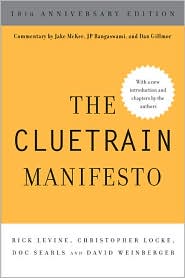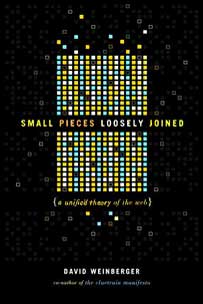November 15, 2013
[liveblog][2b2k] Saskia Sassen
The sociologist Saskia Sassen is giving a plenary talk at Engaging Data 2013. [I had a little trouble hearing some of it. Sorry. And in the press of time I haven’t had a chance to vet this for even obvious typos, etc.]
|
NOTE: Live-blogging. Getting things wrong. Missing points. Omitting key information. Introducing artificial choppiness. Over-emphasizing small matters. Paraphrasing badly. Not running a spellpchecker. Mangling other people’s ideas and words. You are warned, people. |
1. The term Big Data is ambiguous. “Big Data” implies we’re in a technical zone. it becomes a “technical problem” as when morally challenging technologies are developed by scientists who thinks they are just dealing with a technical issue. Big Data comes with a neutral charge. “Surveillance” brings in the state, the logics of power, how citizens are affected.
Until recently, citizens could not relate to a map that came out in 2010 that shows how much surveillance there is in the US. It was published by the Washington Post, but it didn’t register. 1,271 govt orgs and 1,931 private companies work on programs related to counterterrorism, homeland security and intelligence. There are more than 1 million people with stop-secret clearance, and maybe a third are private contractors. In DC and enirons, 33 building complexes are under construction or have been built for top-secret intelligence since 9/11. Together they are 22x the size of Congress. Inside these environments, the govt regulates everything. By 2010, DC had 4,000 corporate office buildings that handle classified info,all subject to govt regulation. “We’re dealing with a massive material apparatus.” We should not be distracted by the small individual devices.
Cisco lost 28% of its sales, in part as a result of its being tainted by the NSA taking of its data. This is alienating citzens and foreign govts. How do we stop this? We’re dealing with a kind of assemblage of technical capabilities, tech firms that sell the notion that for security we all have to be surveilled, and people. How do we get a handle on this? I ask: Are there spaces where we can forget about them? Our messy, nice complex cities are such spaces. All that data cannot be analyzed. (She notes that she did a panel that included the brother of a Muslim who has been indefinitely detained, so now her name is associated with him.)
3. How can I activate large, diverse spaces in cities? How can we activate local knowledges? We can “outsource the neighborhood.” The language of “neighborhood” brings me pleasure, she says.
If you think of institutions, they are codified, and they notice when there are violations. Every neighborhood has knowledge about the city that is different from the knowledge at the center. The homeless know more about rats than the center. Make open access networks available to them into a reverse wiki so that local knowledge can find a place. Leak that knowledge into those codified systems. That’s the beginning of activating a city. From this you’d get a Big Data set, capturing the particularities of each neighborhood. [A knowledge network. I agree! :)]
The next step is activism, a movement. In my fantasy, at one end it’s big city life and at the other it’s neighborhood residents enabled to feel that their knowledge matters.
Q&A
Q: If local data is being aggregated, could that become Big Data that’s used against the neighborhoods?
A: Yes, that’s why we need neighborhood activism. The polticizing of the neighborhoods shapes the way the knowledge isued.
Q: Disempowered neighborhoods would be even less able to contribute this type of knowledge.
A: The problem is to value them. The neighborhood has knowledge at ground level. That’s a first step of enabling a devalued subject. The effect of digital networks on formal knowledge creates an informal network. Velocity itself has the effect of informalizing knowledge. I’ve compared environmental activists and financial traders. The environmentalists pick up knowledge on the ground. So, the neighborhoods may be powerless, but they have knowledge. Digital interactive open access makes it possible bring together those bits of knowledge.
Q: Those who control the pipes seem to control the power. How does Big Data avoid the world being dominated by brainy people?
A: The brainy people at, say, Goldman Sachs are part of a larger institution. These institutions have so much power that they don’t know how to govern it. The US govt has been the post powerful in the world, with the result that it doesn’t know how to govern its own power. It has engaged in disastrous wars. So “brainy people” running the world through the Ciscos, etc., I’m not sure. I’m talking about a different idea of Big Data sets: distributed knowledges. E.g, Forest Watch uses indigenous people who can’t write, but they can tell before the trained biologists when there is something wrong in the ecosystem. There’s lots of data embedded in lots of places.
[She’s aggregating questions] Q1: Marginalized neighborhoods live being surveilled: stop and frisk, background checks, etc. Why did it take tapping Angela Merkel’s telephone to bring awareness? Q2: How do you convince policy makers to incorporate citizen data? Q3: There are strong disincentives to being out of the mainstream, so how can we incentivize difference.
A: How do we get the experts to use the knowledge? For me that’s not the most important aim. More important is activating the residents. What matters is that they become part of a conversation. A: About difference: Neighborhoods are pretty average places, unlike forest watchers. And even they’re not part of the knowledge-making circuit. We should bring them in. A: The participation of the neighborhoods isn’t just a utility for the central govt but is a first step toward mobilizing people who have been reudced to thinking that they don’t count. I think is one of the most effective ways to contest the huge apparatus with the 10,000 buildings.








